My friends, we all deserve a break once in a while. But if you’re thinking about beaches or mountaintops, you’re going typical. Aren’t temples worth exploring, too? There are hundreds of temples in Asia alone. While these holy places are mostly visited for religious traditions by Hindus and Buddhists, these temples also welcome tourists who want to take a peak of a significant culture. You might want to visit some of these beautifully historical temples on the list.
Paro Taktsang Monastery – Paro, Bhutan
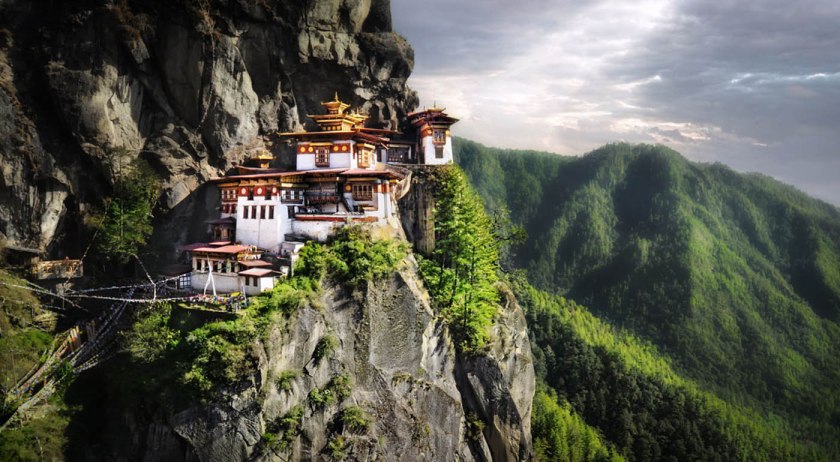
Paro Taktsang, commonly called Tiger’s nest, is Bhutan’s most sacred site. The monastery hangs on a granite cliff more than 10,000 meters above sea level. According to legends, Buddhist Master Padmasambhava flew to the cliff from Tibet on the back of a tigress and meditated in a cave in the 8th century. Thus, the name. In 1998, a fire broke out and burnt the main building of the monastery and destroyed some of the important paintings and artifacts. The incident did not totally damage the entire beauty and sacredness of the Paro Taktsang, though. Bhutanese Buddhists and foreigners endure a two-hour difficult trek to reach the monastery. It consists four main temples, shelters for monks and eight caves where Padmasambhava meditated. The temples house the various manifestations (reincarnation) of Padmasambhava and religious paintings. The mystical atmosphere of the monastery and the breathtaking view of Bhutan up from the cliff never fail to attract millions of tourists and religious individuals every year.
Borobudur – Central Java, Indonesia
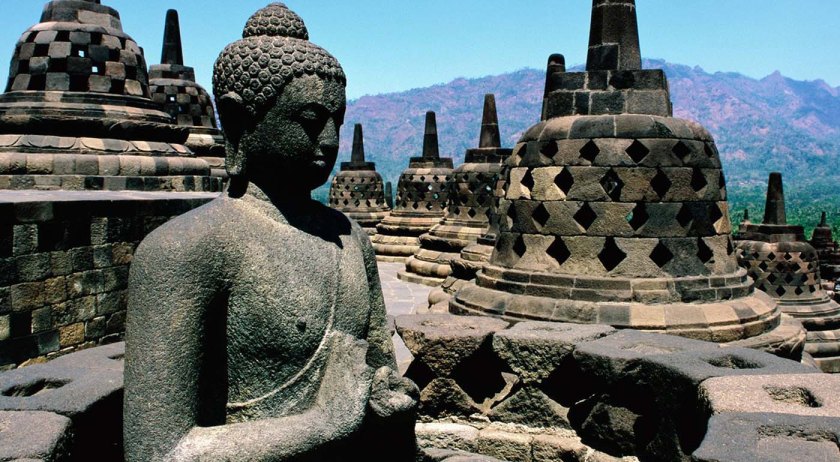
Built some time between 750 AD and 850 AD, Borobudur Temple is one of the world’s greatest Buddhist monuments. It’s Sanskrit origin ‘Vihara Buddha Uhr’ means ‘Buddhist Monastery on the Hill’. The religious site has been abandoned and hidden for centuries under layers of volcanic ash from Mount Merapi and a thick jungle before it was discovered in 1814 by British rulers in Indonesia. It took decades before Borobudur regained the attention and protection it deserved. There was even a proposal to dismantle the monuments and distribute them to museums around the globe. In 1983, the monuments were restored and cleaned. Local and foreign tourists took notice of the religious site after UNESCO declared it a World Heritage Site in 1991.
Kashi Vishwanath Temple – Uttar Pradesh, India
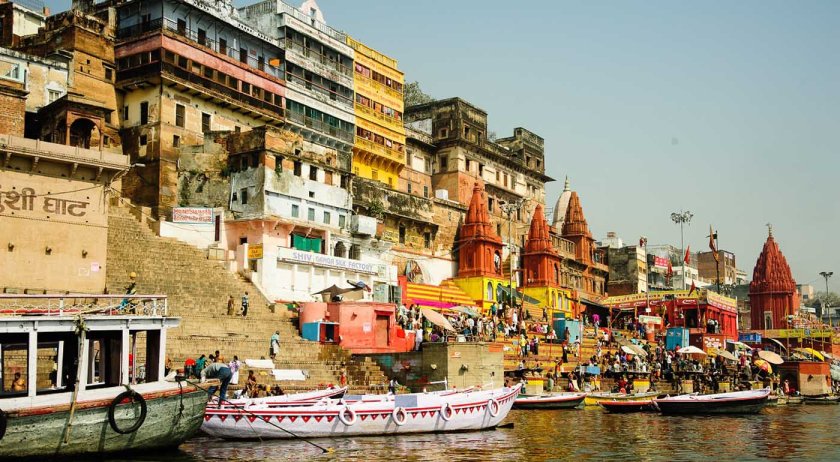
Kashi Vishwanath Temple has probably the most unfortunate history among Hindu temples. In Asia. It has been rebuilt several times after Muslims in India repeatedly destroyed the temple. From 1033 to 1669 AD, kashi was demolished and replaced by Masjids, then restored by Hindu devotees only to be destroyed again. The present temple was built through the orders of Maharani Ahilyabai Holkar in 1776 AD. In 1785 AD, the temple was renovated and covered in gold. A huge bell from the King of Nepal was put up, and many smaller temples were built near Varanasi. Located inside the prime place of pilgrimage Varanasi, Kashi Vishawanath is considered the holiest temple as it is said to be dear to Lord Shiva. Those who come and die in this landmark riverside temple attains liberation and happiness. The Ganga around the temple is believed to be the nectar of the earth.
Shwedagon Zedi Daw Pagoda – Yangon, Myanmar
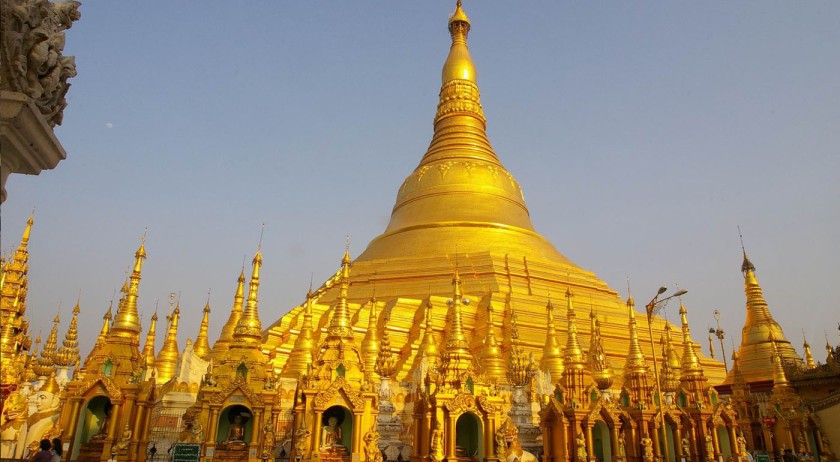
Covered in gold plates and diamonds, the 2600-year old Shwedagon Pagoda is Myanmar’s most sacred Buddhism site. The legend begins with two Burmese merchants who met Gautama Buddha and were given eight strands of his hair. The merchants returned to Burma (Myanmar’s ancient name) and gave the hair relics to their King. Years after, the spot where the relics of previous Buddhas were enshrined was found. The eight hairs of Gautama Buddha was then placed on the same spot and Shwedagon Pagoda was built over it. Over hundreds of years, Shwedagon Pagoda has survived earthquakes, typhoons, fires and invasions. But what makes Shwedagon more popular is the missing Great Bell of Dhammazedi – the largest bell in the world. It was given as a gift to the pagoda by King Dhammazedi but was stolen by Portuguese warlord Filipe de Brito e Nicote. The bell, made of metal, silver and gold, was taken down from the pagoda and was rolled through a raft to the Bago River. The bell sank into the bottom of the river and has never been found since then. People in Myanmar as well as other foreign historians and divers still search for the missing 300-ton bell until now.
Kotoku-in Temple – Kamakura, Japan
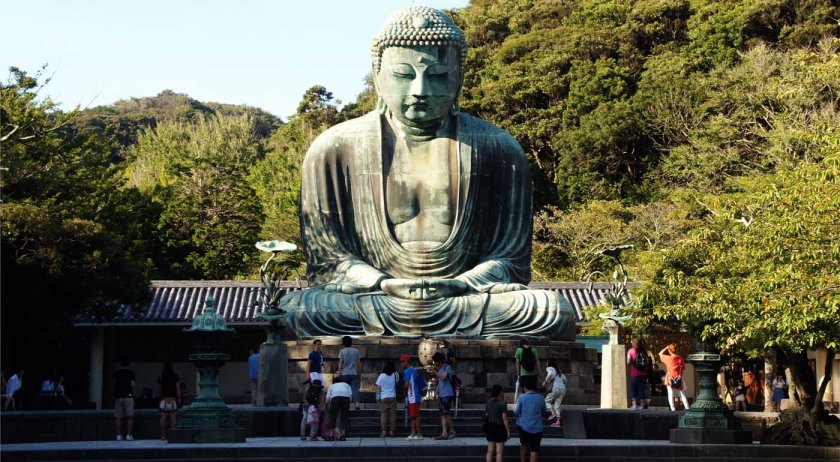
What makes Kotoku-in Temple famous among Buddhists is the 13-meter tall Buddha in it. The Great Buddha of Kamakura is a bronze statue Amitabha Buddha constructed in 1252, in the Kamakura period. Great Buddha was originally enshrined in Daibutsu-den Hall but the entire building was destroyed by typhoon that hit Japan in 1334. The hall was rebuilt but was again destroyed by another typhoon in 1369. The last building that housed the statue was washed by tsunami in 1498. Since then, The Great Buddha was placed in open air, making it an unusual tradition amongst large Buddha statues in Japan.
Hanging Temple – Shanxi, China
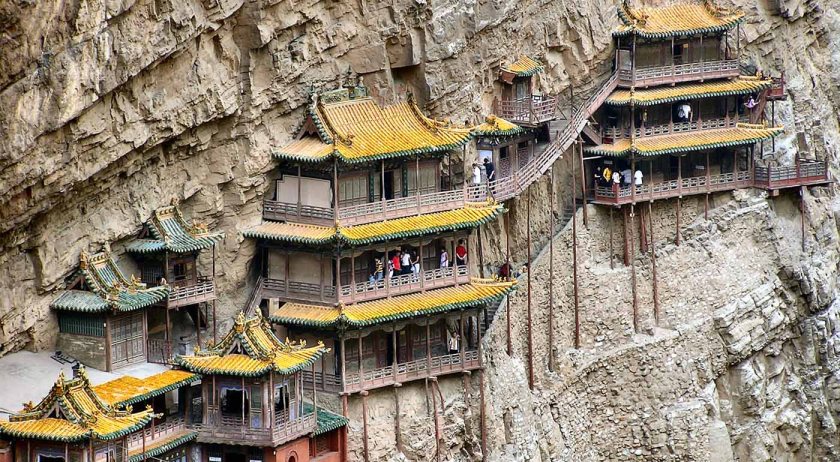
Despite being considerably forgotten, the Hanging Temple is an architectural wonder. Hanging 75 meters above the ground into a cliff near Hengshan Mountain, the 1400-year old temple does not just defy the gravity but of religion as well. It fairly celebrates three religions within it – Buddhism, Taoism and Confucianism. It has 40 rooms and a total of 78 statues and carvings representing the three religions. The statue of Sakyamuni for Buddhism stands in the middle, Laozi, a deity in Taoism, on the right and Confucius, founder of Confucianism, on the left, with different expressions. The Hanging Temple, also called Hanging Monastery, was design skillfully combing religion and culture of Chinese feudal society. According to legends, just one monk named Liao Ran built the temple at the end of the Northern Wei dynasty.
Boudhanath Stupa – Kathmandu, Nepal
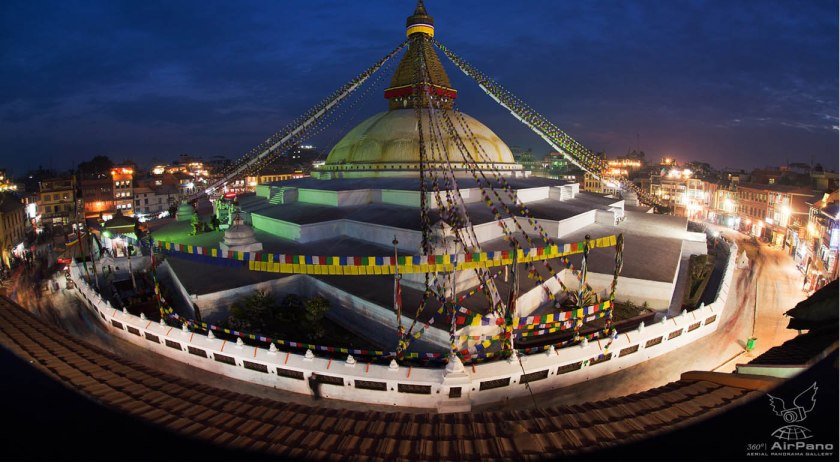
Named the largest stupa in Nepal and the holiest Tibetan Buddhist temple outside of Tibet, dominates the skyline of Kathmandu. The stupa was said to be built by Jyajima, a poor mother with four sons. Being too religious, Jyajima initiated the construction of Boudhanath, with the land given by the king of Nepal. Soil, bricks and stones were carried on elephants, horses and other animals. When the woman died, her four sons completed the stupa. It was also known that a man, no matter what sins he has, shall be grant atonement if he circles around the stupa even just once in his life. During the Tibetan New Year in Nepal, Boudhanath Stupa hosts the largest celebration. But here’s a truly sad truth: Bhoudanath has been reduced into rubble by the 7.8-magnitude quake that shook Nepal in April 2015.
Angkor Wat – Cambodia

Undeniably one of the world’s most visited religious and tourist site, Angkor Wat is a tangible testimony of the wealth and power of the Khmer Empire. It was constructed between 1113 and 1145 during the reign of King Suryavarman II. The temple was built for 37 years because of conflicts and power struggles in the empire. Angkor Wat was originally offered to Vishnu, the Hindu God of protection. While the purpose of Angkor Wat’s construction is still a hot debate among historians and Cambodians, Khmers tag it as funerary temple. Angkor Wat faces west – the direction believed to symbolize death – while all other temples are facing east. Inside the Angkor Wat are thousands of apsara (heavenly nymph) wall carvings. With its extricate details and form, Angkor Wat is also considered a replica of the universe and represents an earthly model of the cosmic world.
The luxurious architecture and breathtaking facade of these religious structures are just actually a plus. What you will surely get, aside from fun, is the feeling of serenity and unearthly contentment. These temples and a lot more are worth your time. Because why not.
